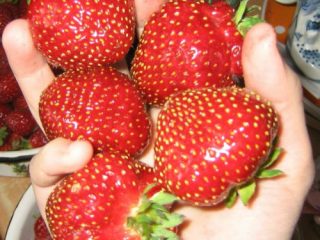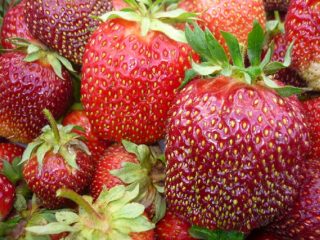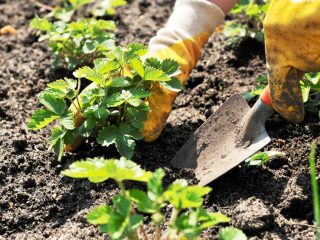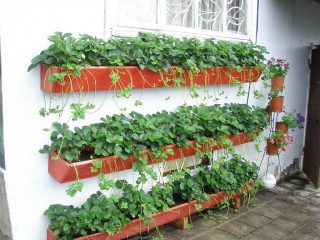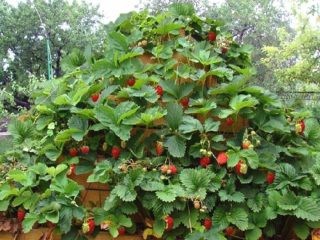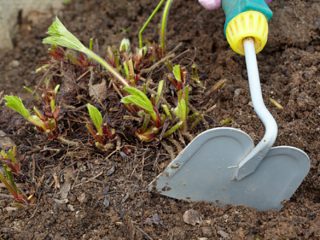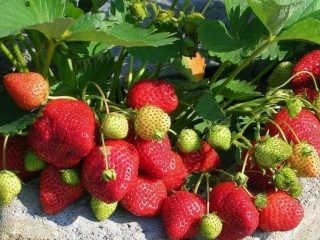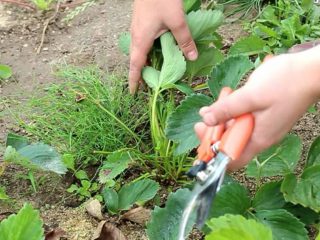Content
At least a small bed of strawberries is an integral part of the vast majority of personal plots. Breeders have developed an extremely large number of varieties of this berry, so gardeners try to choose those that combine outstanding taste with high yield and relative ease of care. The French strawberry Mariguette meets all these criteria.
History of selection
Strawberries Mariguette, also known as Mariguette and Mariguette, were developed by the French company Andre. The creators position the variety as universal, ideal for cultivation in the continental European climate.
Its “parents” were the strawberry varieties Gariguette, well known in France since the beginning of the last century and considered one of the elite varieties of berries, and Mara des bois (Mara de Bois) - an achievement of breeders of the same company, which appeared in the late 80s .From the first, Mariget “inherited” the characteristic shape and size of the berries, from the second – the typically “strawberry” taste and aroma, and remontant quality.
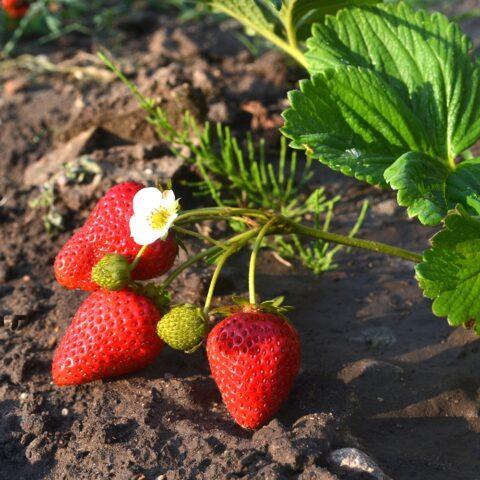
The name Mariguette is a combination of the names of two varieties that became the “parents” of this strawberry
The name Mariguette is a combination of the names of two varieties that became the “parents” of this strawberry
In its homeland, this variety appeared on sale in 2015. In Russia, Mariget strawberries were certified in 2017. The variety is not yet included in the State Register.
Description and characteristics of the strawberry variety Mariget
The creators position Mariget as a strawberry practically devoid of flaws. The description is truly extremely inspiring for any gardener.
Appearance and taste of berries
Strawberry Mariget looks very presentable. The berries are one-dimensional, relatively large (25-30 g), regular cone-shaped or elongated teardrop-shaped, with a pointed “spout”. The skin is dense, smooth, glossy, pink-red in color.
Fully ripe berries are characterized by a pronounced wild strawberry aroma. The flesh is pale red, soft and juicy, not too dense. The taste is balanced - very sweet, with a slight refreshing sourness.
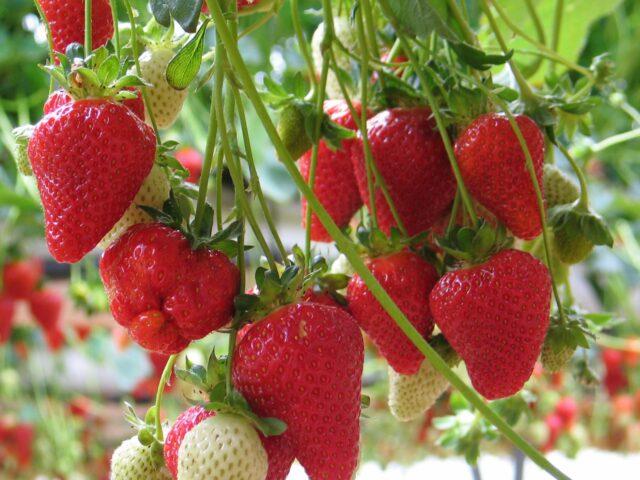
Mariguet berries were recognized by professional tasters as one of the sweetest
Flowering period, ripening period and yield
Mariget belongs to the early remontant varieties of strawberries. It blooms already in mid-May. Fruiting begins in the first ten days of June and ends in early October. In warm subtropical climates, the harvest is harvested right up to frost.Over the entire summer, an adult plant produces 0.8-1.2 kg of berries.
In terms of productivity, Mariguet strawberries are comparable to Cabrillo. But it loses to the most “productive” varieties, for example, Harmony.
Frost resistance
Cold resistance down to -20 ºС allows Mariguet strawberries to winter without damage in the subtropical climate of southern Russia, even without shelter. But in the middle zone it will still need “protection”, especially if the winter is predicted to be harsh and with little snow.
Resistance to diseases and pests
According to breeders, Mariget strawberries are practically immune to pathogenic microflora. During the cultivation of “experimental” specimens, there were no cases of infection with true and downy mildew, spots of any kind, root rot and other diseases affecting the root system.
Pests, as practice shows, are also not particularly interested in Mariguet strawberries. Even during massive attacks on neighboring bushes in the garden, they bypass these plants.
Pros and cons of the variety
The advantages of Mariguet strawberries clearly outweigh the disadvantages.
pros | Minuses |
Endurance and ability to adapt to a wide range of climates and weather conditions | If, at a time when there is intense heat for a long time and there is no precipitation, regular watering is not provided, the berries become smaller, “shrink out,” and the taste noticeably deteriorates. |
High immunity (this applies to both diseases and pests) | The bushes are relatively low (up to 30 cm), but spreading, they require a lot of space in the garden bed |
Cold resistance sufficient for cultivation in temperate climates |
|
Ability to withstand short-term drought without damage |
|
Long-term fruiting |
|
Very good yield |
|
External presentability of fruits (preserved after heat treatment and freezing) |
|
Excellent taste and aroma of berries |
|
The universal purpose of strawberries (they can be eaten fresh, frozen, used for any homemade preparations and baking) |
|
Keeping quality (up to five days in optimal conditions) and transportability (thanks to the thick skin) |
|
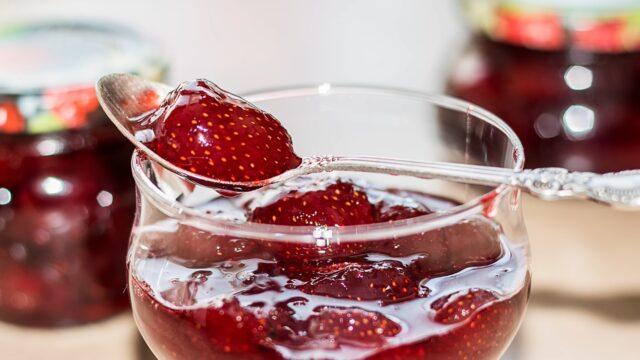
Preserves, jams, compotes retain the characteristic taste and aroma of fresh berries, strawberries do not turn into unappetizing porridge
Features of cultivation
In order for Mariguet strawberries to bear fruit consistently and abundantly, you need to take into account important nuances and recommendations regarding its planting and agricultural technology. Moreover, the “requirements” of the variety are few:
- The preferred location for the garden bed is a flat area or the slope of a gentle hill. Lowlands and places where cold, damp air stagnates are not suitable. Like any strawberry, Mariget does not tolerate northern winds and sharp drafts.
- The ideal substrate is humus-rich loamy or sandy loam soils. They are quite light and allow water and air to pass through well. Acidity must be neutral (within 5.5-6.0 pH). Although, in principle, Mariguet strawberries take root in any soil, except for very heavy clay, marshy, sandy, rocky soils.
- If groundwater comes closer to the surface than 0.5 m, it is necessary to look for another area or build beds at least 30 cm high.
- When planting between neighboring Mariguet strawberry bushes, leave 40-50 cm. The interval between rows of plantings is 60-65 cm.
- The standard method of reproduction is by mustache. Two-year-old abundantly fruiting bushes are selected as “mother plants”.They leave a maximum of five whiskers with three rosettes on each. Thus, one plant produces 15 new ones. You just need to remember that you won’t be able to harvest the “mother” strawberry bushes at the same time. All emerging flower stalks and buds are immediately removed.
- Plants need daily watering only immediately after planting, before rooting. The average norm is 2-3 liters of water per 1 m². As soon as new leaves appear, they switch to weekly watering, spending 5-7 l/m². In extreme heat, the intervals are reduced to 3-4 days, the rate is increased to 2-3 liters per bush.
- Strawberries Mariget prefers specialized store-bought fertilizers. Natural organic matter will not harm it, but it will not provide all the macro- and microelements in the volumes that the bushes need for such long fruiting and high productivity. Fertilizing is applied four times per season - at the moment the first leaves appear, at the budding stage, 4-5 weeks after harvesting and immediately after fruiting. The fertilizer used first must contain nitrogen. Further, Mariguet strawberry bushes require mainly phosphorus and potassium.
- In preparation for winter, a bed cleared of plant debris is covered with spruce branches, straw, and fallen leaves, after adding peat or humus (mounds 10-15 cm high) to the base of the bushes. Additionally, you can install it over the arch by stretching lutrasil, spunbond, or any other covering material over them.
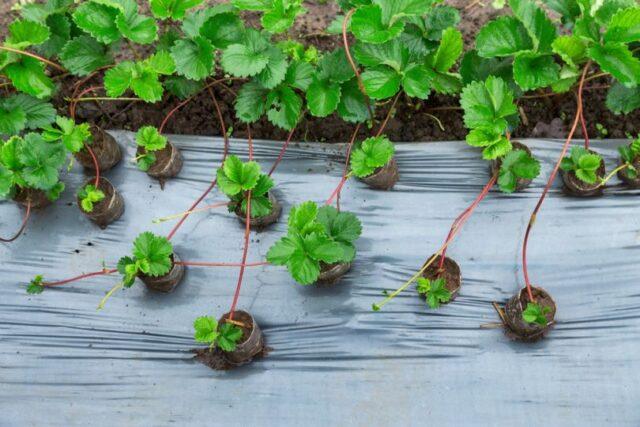
Relatively few mustaches are formed on the bushes, but there will not be a shortage of planting material
Mariguet strawberry plantings need to be renewed every 4-5 years. At the same time, it is necessary to move the bed to a new location, taking into account the requirements of crop rotation.Otherwise, not only the quality of the berries suffers, but the endurance of the plants and their immunity deteriorate.
Conclusion
Strawberry Mariguette is a new French variety, specially created for cultivation in the continental European climate. It was introduced quite recently, so it is not yet very popular in Russia. However, all the prerequisites for this exist. Mariget stands out from other varieties due to its combination of “basic” advantages for a gardener (taste of berries, yield, undemandingness). No significant deficiencies of the variety were identified.
